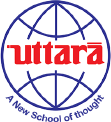Aim of the course is to enable the students become expert systems programmers by mastering the fundamentals of C & UNIX technologies and systems approach to programming. The entire course comprises over 150 hours of teaching dedicated to making the student gain expertise in handling industrial grade software.
Author:
The trainer M L S Shastry has 20 years of actual industrial experience with 25 years of teaching experience. 25,000+ students have availed the benefit of his passionate teaching over the past 25 years. We at Uttara want to take this sea of knowledge to the maximum number of students possible. At the end of the course, students should not only be good in C & UNIX, but would also understand the why of programming. The students would be better IT professionals by completing the course.


